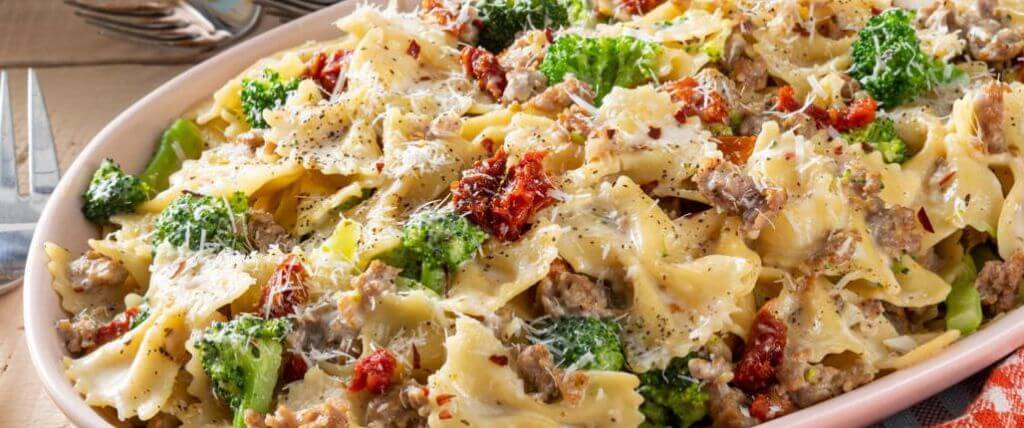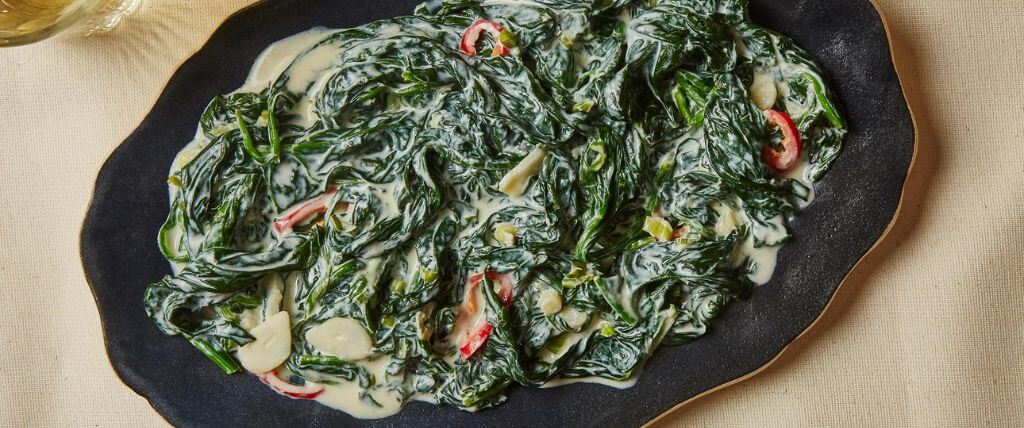Fruits That Start With V: We Have a List of 15 Fruits for You
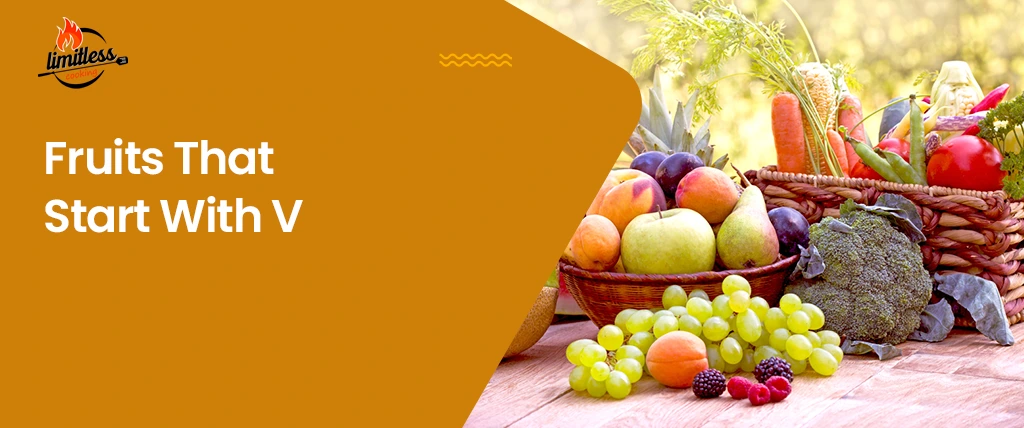
Fruits are delicious and nutritious gifts from nature that are available in a wide range of tastes and varieties. If you are a health and fruit enthusiast, I am sure you are trying to find the names of fruits alphabetically.
So, if you are thinking hard and wondering about which fruits start with v, you are pretty much at the right place. In this article, you will find 15 fruits that begin with V, their origin, nutrition facts, and a lot more. Now, you better stick around.
15 Fruits That Start With V
1. Vaccarese Grape
This grape originated in France and is mostly grown in the Rhone Valley of the country.
Among the grapes grown on vines, Vaccarese grapes are among the most well-known. Red wines get richness from the Vacaresse by being more beautiful and appealing. The berries are similarly of medium size. The texture of the grapes has a few imperfections, but they always maintain their characteristic round shape.
2. Vernaccia Grape
This grape is a variety grown in Italy. In fact, the word “Vernaccia” is derived from the Italian word “vernacular,” which means “common” or “indigenous.” This fruit is popular in Italy and London.
The light-green Vernaccia grape has a somewhat reddish tip. This fruit is small and sweet, making it a good choice for sweets or cocktails. However, this fruit is commonly used in white wine production, such as the Vernaccia di San Gimignano.
3. Vespolina Grape
Vespolina grapes are another common Italian grape variety for creating red wine. These dark-blue Vespolina grapes with scarlet flesh have a delicate, sweet flavor.
This vine is regarded as one of the best for producing red wines. Similar to regular grapes, Vaspolina grapes can also be used as sweets or as a garnish on cakes and ice cream. The fruit’s eye-catching appearance makes it perfect for culinary decorations.
As one of the uncommon types of grapes utilized for vineyards, only a small number of varietal Vespolina wines are produced.
Grapes Nutrition Facts
Grapes are packed with important nutrients. In just 1 cup (151 grams) of green or red grapes, there is
| Elements | Quantity |
|---|---|
| Calories | 104 |
| Fiber | 1.36 g |
| Sugar | 23.4 g |
| Protein | 1.09 g |
| Sodium | 3.02 mg |
| Carbohydrate | 27.3 g |
| Vitamin A | 4.53 mcg |
| Vitamin C | 4.83 mg |
| Potassium | 288 mg |
| Magnesium | 10.6 g |
| Calcium | 15.1 g |
| Phosphorus | 30.2 g |
4. Valencia Pride Mango
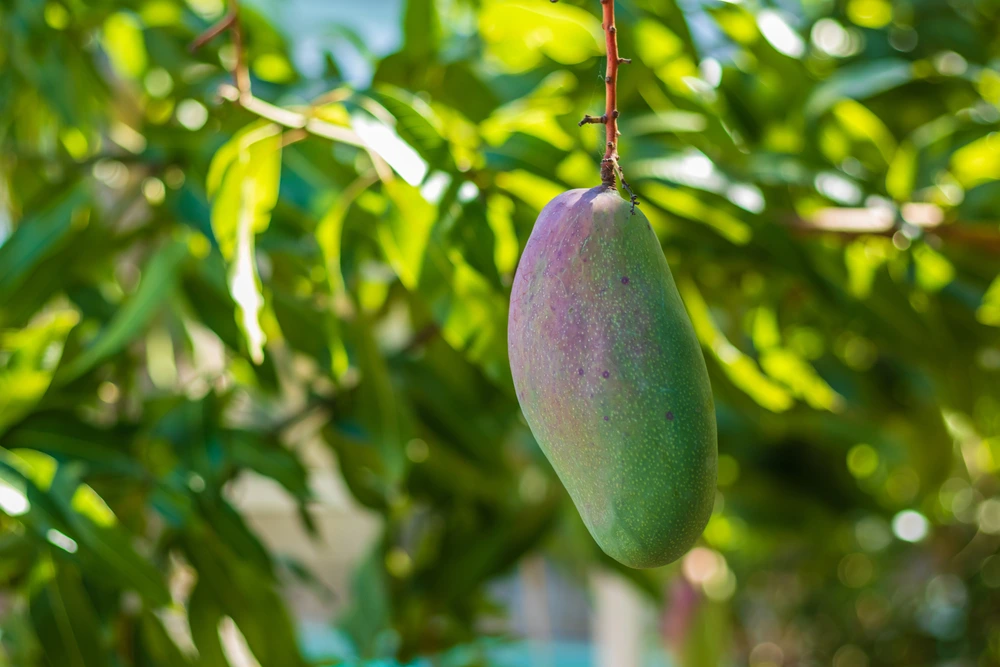
These delicious mid-season hybrid mangoes are one of the many mango varieties cultivated in Florida.
Valencia Pride Mango has a color blend of vivid red, yellow, and green. It is rather huge and has an elegant shape. The skin is smooth, thin, and covered in lenticels, which are tiny yellow dots. Additionally, the honeyed aroma it exudes is extremely attention-grabbing.
This fruit has an outstanding flavor. With little fiber, the meat is sweet, juicy, and soft.
5. Van Dyke Mango
Van Dyke Mango also originated in Miami, Florida. This variety, which is a dual-colored fruit, is rather unusual when compared to your typical mango. The skin is red and green when the fruit is immature. When the fruit ripens fully, this green color changes to a lovely yellow. These mangoes ripen between June and July.
The fruit is oval, like regular mangoes, with a rounded end and a beak that might be pointed or bland. The fruit has smooth, thick, and fragrant skin that is easy to remove.
Despite being barely 10 cm in length, 8 cm in width, and weighing only about 280 grams on average, this fruit’s flavor will not let you down. They have a firm texture that simply melts on the tongue. Van Dyke has little fiber and is juicy. The fruit is orange-yellow inside and has a spicy and sweet flavor.
Nutritional Value of Mangoes
According to the USDA, the following amounts are in one cup of sliced mango (165 grams):
| Elements | Quantity |
|---|---|
| Calories | 99 |
| Fiber | 2.64 g |
| Sugar | 22.6 g |
| Protein | 1.35 g |
| Sodium | 1.65 mg |
| Carbohydrate | 25 g |
| Vitamin A | 89.1 mcg |
| Vitamin C | 60 mg |
| Potassium | 277 mg |
| Vitamin B-6 | 0.2 mg |
| Folate | 71 mcg |
| Magnesium | 16.5 mg |
| Calcium | 18.2 mg |
6. Villafranca Lemon
The fruit has a fairly distinct beak and is oval in shape. When ripe, the skin is slightly tough and extremely yellow. This lemon typically matures in the winter and thrives in milder climates.
You cannot tell the Villafranca lemon from the Eureka lemon just by looking at them. The former, however, has fewer seeds and has a more acidic but sharper flavor. This fruit’s flavor makes it the ideal ingredient for limoncello or lemon pudding.
7. Volkamer Lemon
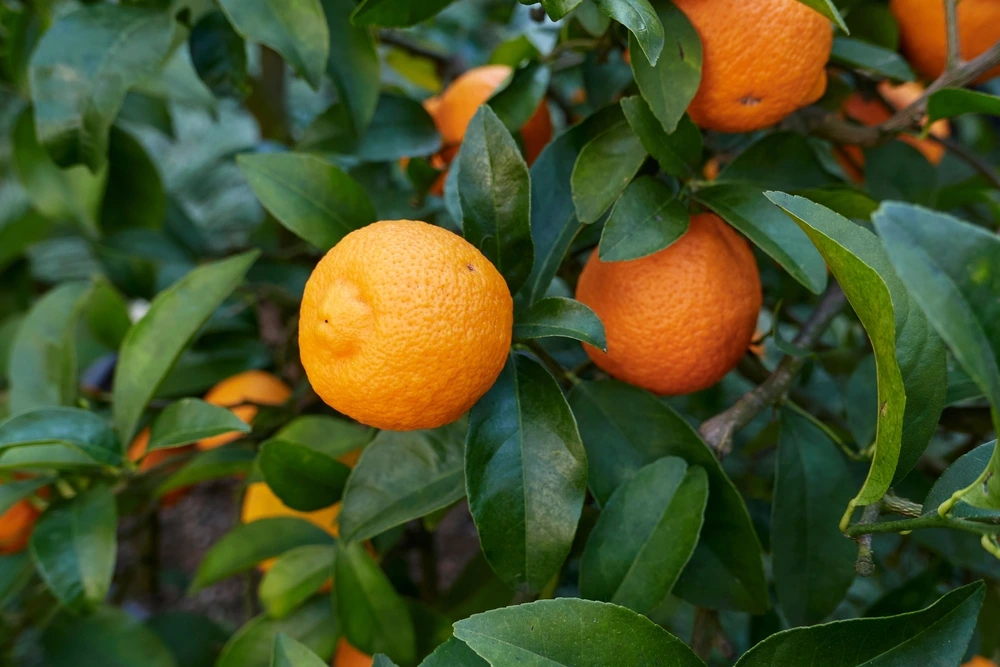
The Volkamer Lemon, which has a pleasant aroma and flavor and is acidic and bitter, has been known for about three centuries. Some citrus specialists believe the Volkamer Lemon is a type of mandarin lime, while others characterize it as a hybrid between lemons and bitter oranges.
The fruit tastes and looks like an Italian Monachello or a rough Lemon. Because it is sour and only slightly bitter, the flavor may not be to everyone’s liking. It can be used as a lower-acid replacement for lemon, though.
8. Verna Lemon
Although it is commonly produced in Spain, the origin of this odd-looking fruit is still unknown. Most Verna harvesting occurs between February and July. It is popular because it has a high yield potential and, in favorable areas, can bloom all year round.
This fruit’s shape can range from oval to elliptical and has a large nipple at the tip. The flesh is soft, sweet, and practically seed-free, in contrast to the tough, thick, and bright yellow rind. Verna juice can be mixed with other drinks or used as a cooking ingredient.
Lemon Nutrition Facts
According to the USDA, From 1 cup ( 244g) of raw lemon juice, you will get
| Elements | Quantity |
|---|---|
| Calories | 53.7 |
| Fiber | 0. 732 g |
| Sugar | 6.15 g |
| Protein | 0.854 g |
| Sodium | 2.44 mg |
| Carbohydrate | 16.8 g |
| Vitamin C | 94.4 mg |
| Potassium | 251 mg |
| Vitamin B-6 | 0.112 mg |
| Folate | 48.8 mcg |
| Magnesium | 14.6 mg |
| Calcium | 14.6 mg |
| Phosphorus | 19.5 mg |
9. Valencia Orange
Because of their sweetness and decadent flavor, Valencia oranges are a favorite ingredient in orange juice. An American agronomist named William Wolfskill developed this hybrid fruit.
They can be both round and oval-shaped. The seedless flesh beneath the skin has a lovely aroma. And the meat’s juiciness and sweetness will really take your breath away.
Nutrient Components of Valencia Orange
A 100g raw valencia can provide:
| Elements | Quantity |
|---|---|
| Calories | 49 |
| Fiber | 2.5 g |
| Protein | 1.04 g |
| Carbohydrate | 11.9 g |
| Vitamin C | 48.5 mg |
| Potassium | 179 mg |
| Folate | 39 mcg |
| Magnesium | 10 mg |
| Calcium | 40 mg |
| Phosphorus | 17 mg |
10. Velvet Apple
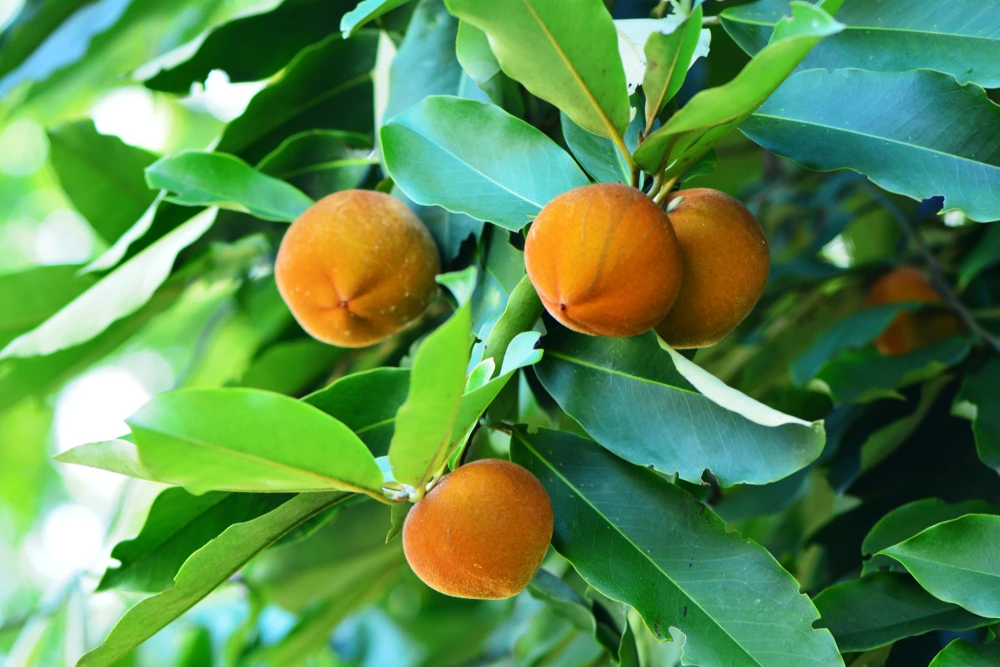
Velvet apple, also known as Mabolo or Amagong, originated in Malaysia.
The hue of the skin, which has an awful odor, can range from red to brown to orange. Please be aware that this skin is bitter and that it should not be eaten. The meat portion is succulent, soft, and has a peach-like flavor. The velvet apple bears fruit all year and is at its best in the summer.
Velvet Apple Nutrients
Here is the chart of 100g velvet apples’ nutritional value.
| Elements | Quantity |
|---|---|
| Calories | 504 |
| Fiber | 0.74 g to 1.76 g |
| Sugar | 11.47 g |
| Protein | 0.75 g |
| Sodium | 110 mg |
| Carbohydrate | 5.49-6.12 g |
| Potassium | 303 mg |
| Fat | 0.22-0.38 g |
11. Velvet Bean
The velvet bean, which has its roots in tropical Asia and Africa, is now widely available.
This fruit is S-shaped, and in each pod, you can find 4 to 5 seeds. When the plant is young, the texture is green and coated with yellow hair, but when it reaches maturity, this hair disappears. Be careful touching the hair because it could itch you.
Nutritional Properties of Velvet Beans
Velvet beans are packed with vitamins, minerals, and phytonutrients. It is also an antioxidant powerhouse.
| Elements | Quantity |
|---|---|
| Fiber | 5.16 g |
| Protein | 31.44 g |
| Sodium | 25.70 mg |
| Fat | 6.73 g |
| Carbohydrate | 52.56g |
| Potassium | 1343 mg |
| Magnesium | 109 mg |
| Calcium | 104 mg |
| Zinc | 12.20 mg |
| Phosphorus | 376 mg |
| Iron | 7.47 mg |
12. Victoria Plum
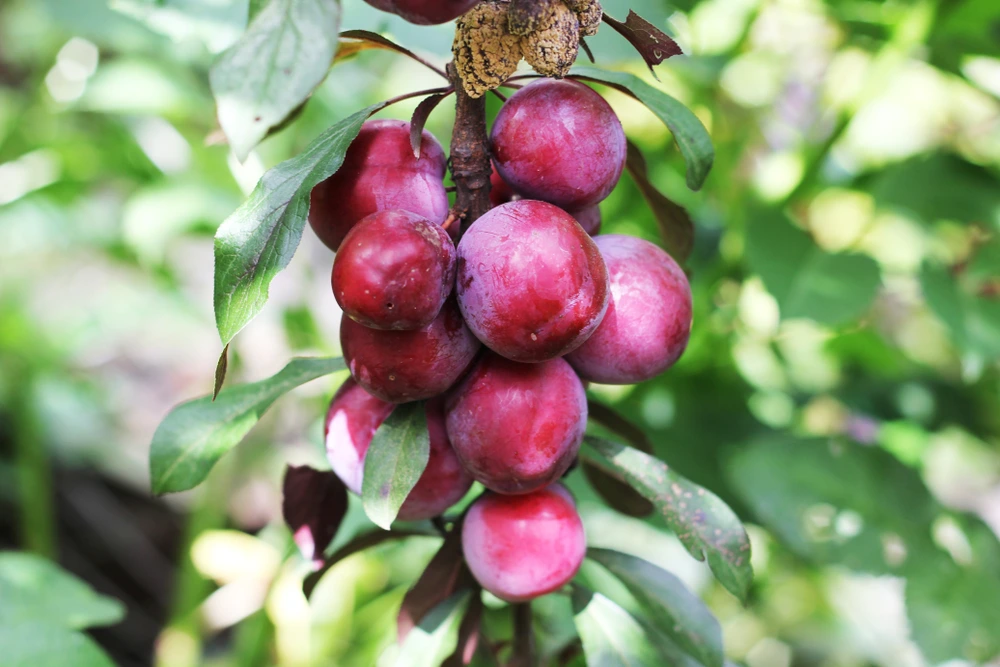
Victoria plum is very popular in England. However, its origin is still a mystery. It was named after Queen Victoria.
This fruit is really colorful. When ripe, the skin changes from green to a dark crimson and yellow mixture. It’s usually harvested in September.
The delicate, light-yellow flesh underneath is luscious, sweet, and of course, delicious! You can eat the fruit straight up or use it to make jam or pudding.
Nutrition Value of Plums
A 100g servings of raw plums provides
| Elements | Quantity |
|---|---|
| Calories | 46 |
| Fiber | 1.4 g |
| Sugar | 9.92 g |
| Protein | 0.7 g |
| Carbohydrate | 11.4 g |
| Vitamin C | 9.5 mg |
| Potassium | 157 mg |
| Vitamin B-6 | 0.2 mg |
| Magnesium | 7 mg |
| Calcium | 6 mg |
13. Vanilla Fruit
Yes, it’s that vanilla you are thinking about.
Vanilla fruit is the only edible member of the world’s largest family of blooming plants, the orchids. Due to the difficult growing process, vanilla is the second-most costly spice in the world after saffron.
Fresh vanilla beans are scentless. However, the enzyme action during the curing process produces the characteristic smell.
You may also like: 15 Most Popular Nigiri Types
Nutrition Value of Vanilla Fruit
Extract of vanilla fruit is very nutrient-rich. Here is what you can get from 100g vanilla extract.
| Elements | Quantity |
|---|---|
| Calories | 288 |
| Sugar | 12.6 g |
| Sodium | 9 mg |
| Carbohydrate | 12.6 g |
| Potassium | 148 mg |
| Magnesium | 12 mg |
| Calcium | 11 mg |
| Phosphorus | 6 mg |
14. Voavanga
Voavanga naturally grows in Africa. This fruit is mostly found in Madagascar, where it has a great reputation.
The size of a Voavanga has the potential to swiftly overpower you. It has a long stem and is rounded. When unripe, the outer is green; when mature, it turns orange. Just one bite of Voavanga can capture your attention thanks to a flavor that is a blend of acidity, sweetness, and deliciousness.
Nutrient Components of Voavanga
According to a study by the National Institutes of Health, from 100g Voavanga pulp, you can get
| Elements | Quantity |
|---|---|
| Calories | 498 |
| Fiber | 4.7% |
| Iron | 1.1 mg to 5.2 mg |
| Protein | 1.4% |
| Carbohydrate | 28% |
| Potassium | 521 mg |
| Magnesium | 39 mg |
| Calcium | 25 mg |
| Phosphorus | 36.6 mg |
15. Velvet Tamarind
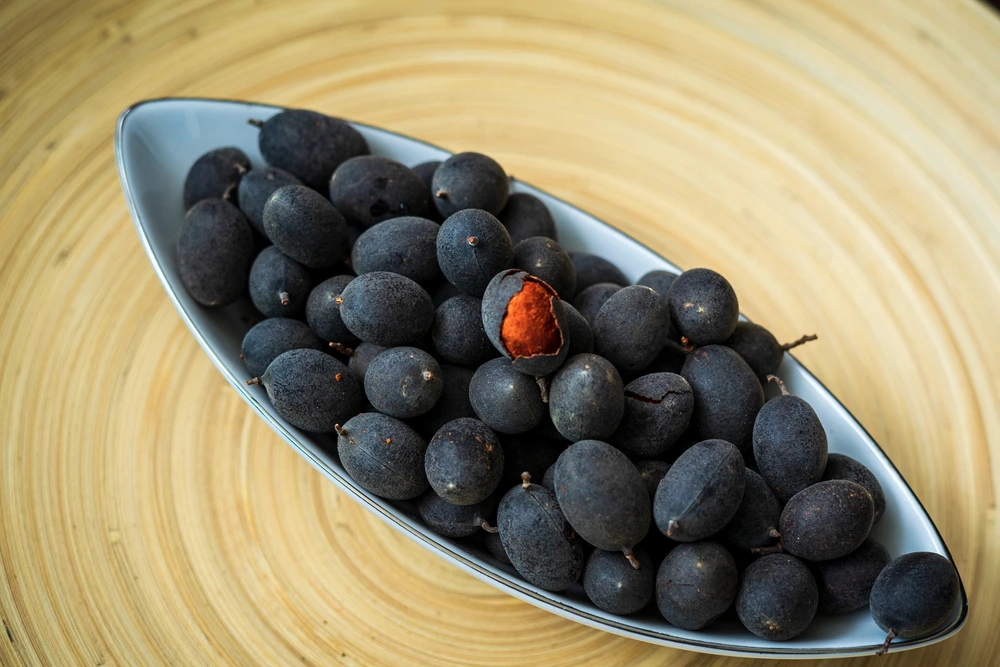
For today, this is the last fruit that starts with V. Depending on the species, velvet tamarind has roots in either South Asia or Africa.
When they are fully grown, they form a hard, inedible shell that needs to be cracked off. Their orange-colored flesh has a tart, sweet flavor.
Because of velvet tamarind’s wonderful flavor, its meat is excellent for cooking as well as eating raw.
Tamarinds Nutrition Values
The number of nutrients in tamarind is high. USDA’s data says, one cup (120 grams) of the pulp can provide
| Elements | Quantity |
|---|---|
| Calories | 287 |
| Fiber | 6.12 g |
| Sugar | 46.6 g |
| Protein | 3.36 g |
| Sodium | 33.6 mg |
| Carbohydrate | 75 g |
| Potassium | 754 mg |
| Magnesium | 110 mg |
| Calcium | 88.8 mg |
| Phosphorus | 136 mg |
Final Words
Today, we have learned a lot about fruits that start with the letter V. We hope that this fruit list will help you to diversify your fruit platter.
But wait! Do you know any fruits that start with V, but we have missed them? If so, comment and let us know.


